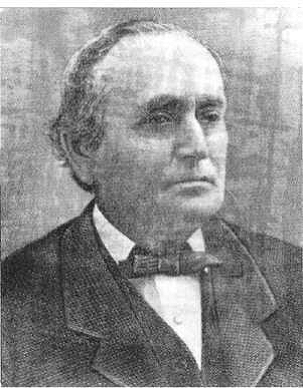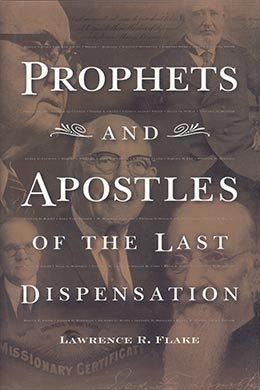Erastus Fairbanks Snow
Lawrence R. Flake, Prophets and Apostles of the Last Dispensation (Provo, UT: Religious Studies Center, Brigham Young University, 2001), 395–97.

Born: 9 November 1818, Saint Johnsbury, Vermont
Quorum of the Twelve Apostles: 12 February 1849 (age 30)
Died: 27May 1888 (age 69), Salt Lake City, Utah
On 21 July 1847, Erastus Snow and Orson Pratt stood at the mouth of Emigration Canyon and looked out at the future site of Salt Lake City. They were the first of the sick and weary pioneers to arrive. Brother Snow’s journal records how he and Brother Pratt “involuntarily both at the same instant uttered a shout of joy at finding it to be the very Place of our destination & the broad Bosom of the Salt Lake spreading itself Before us.” [1] What a challenge lay ahead and what a significant part these men would play.
Erastus Snow, who was only twenty-eight years of age, had already given as much service to the Church as many men do in a lifetime. Baptized at the age of fourteen as a result of the preaching of Orson Pratt, Erastus began almost immediately carrying the gospel to villages near his Vermont home. As a sixteen-year-old priest, he served an extended mission to New York and New Hampshire. At seventeen he moved to Kirtland, where he lived with Joseph Smith for several weeks before filling two missions to the eastern states, during which he traveled 3,500 miles and baptized nearly 150 people. While on these missions, he met with mob opposition and often debated with opponents of the Church before large audiences. Once he debated with six Campbellite preachers at once, offering to give as much proof for the Book of Mormon as they could find for the Bible. One debate lasted twelve hours. During these encounters the Spirit of the Lord enabled the teenage missionary to “confound the wise.”
This same Spirit, plus the speaking ability he had developed as a missionary, once served Erastus Snow well in a courtroom trial. While visiting the Prophet Joseph Smith at Liberty Jail, Elder Snow and the brethren with him were accused of attempting a jail break. Some of the men were able to obtain the aid of lawyers for their trial, but on the advice of Joseph Smith, Erastus Snow defended himself. The Prophet pointed out that although the young man did not understand law, he did know justice and advised him to “plead for justice as hard as you can, and quote Blackstone and other authors now and then, and they will take it all for law.” [2] His performance was so eloquent that he was cleared of the charges. The attorneys flocked around him, inquiring where he had studied law and saying they had never heard a better plea.
From Nauvoo Elder Snow filled four more missions, including a six-month, 5,600-mile tour of Virginia, Pennsylvania, New York, New Jersey, and Rhode Island, and a year-and-a-half assignment in the state of Massachusetts, during which he debated and confounded the notorious apostate John C. Bennett.
In 1846, at the age of twenty-seven, Elder Snow left Nauvoo with his two wives, Artimesia and Minerva, and started the long journey west. In the fall of that year Artimesia’s youngest child died, and before the family reached the Salt Lake Valley, one of Minerva’s children perished also.
At the age of thirty, Erastus became a member of the Quorum of the Twelve, and for nearly forty years until his death, he was a pillar of the missionary, emigration, and colonizing work. In 1850 he opened Denmark to the preaching of the gospel and labored there for two years. Upon his return, he organized the St. Louis Stake and published a Church newspaper from there called the St. Louis Luminary.
In 1861 Brother Snow and his fellow apostle Orson Pratt were given charge of more than two hundred families and sent south to Utah’s “Dixie,” where they established St. George and other communities. After another mission to Europe in 1873, he traveled extensively in Utah, Colorado, New Mexico, and Arizona, helping the work of colonizing. The Mormon community of Snowflake, Arizona, was named in honor of Elder Snow and its founder, William J. Flake. At the time of his passing in 1888, Erastus Snow was characterized as “a wise counselor, an efficient pioneer and colonizer, a great statesman, and in every sense of the word truly an Apostle of the Lord Jesus Christ.” [3]
Notes
[1] Erastus Snow, Journal, 21 July 1847, LDS Church Archives.
[2] History of the Church, 3:258.
[3] Matthias F. Cowley, Prophets and Patriarchs of the Church of Jesus Christ of Latter-day Saints (Chattanooga, TN: Ben E. Rich, 1902), 228. See also Andrew Jenson, Latter-day Saint Biographical Encyclopedia (Salt Lake City: Andrew Jenson History, 1901), 1:102–3.
